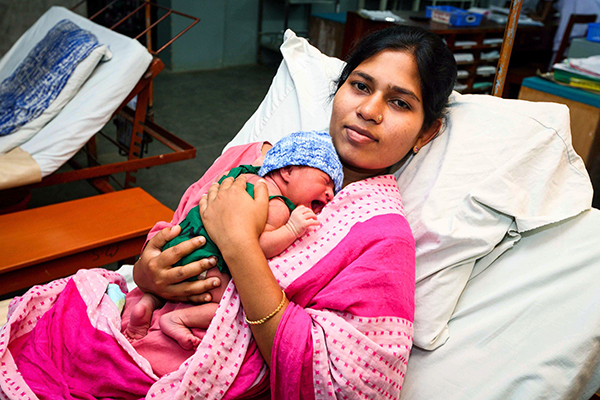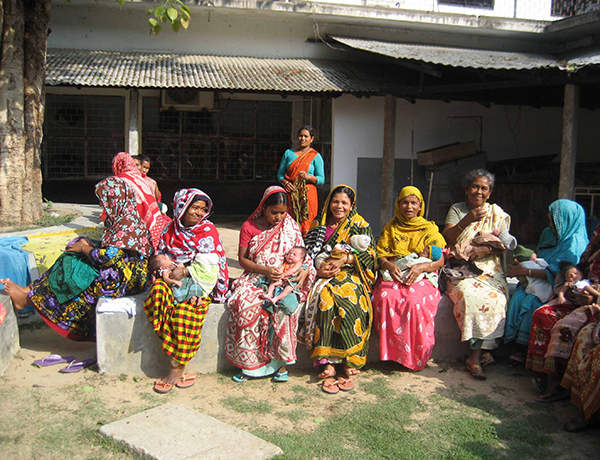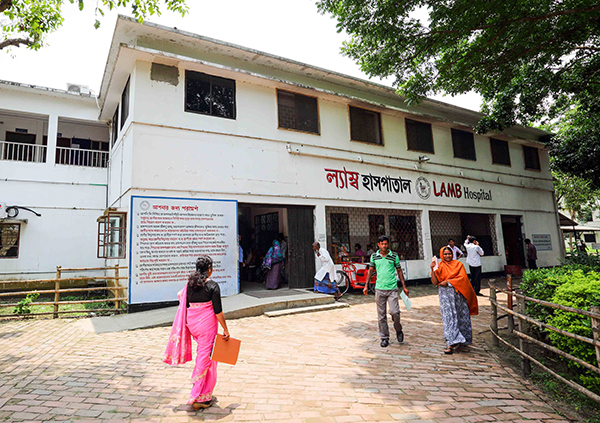Breadcrumb
UI researcher finalist in challenge to improve maternal, newborn health
By Debra Venzke
Published on July 5, 2016

This July, creative thinkers from around the world will gather in Washington, D.C., to pitch their ideas for a chance to secure funding that will take their innovations to the next level. While it may sound like an episode of Shark Tank, the event, called the DevelopmentXChange, is dedicated to finding innovative ideas that address a pressing global health challenge: maternal and newborn mortality.
Will Story, assistant professor of community and behavioral health at the University of Iowa College of Public Health, is among the participants invited to the DevelopmentXChange July 26-28. The event – an inspired mashup of tradeshow, networking opportunities, and mentoring workshops – brings together 50 finalists selected from nearly 650 applications submitted to Saving Lives at Birth: A Grand Challenge for Development.
Story, along with co-principal investigator Dr. Louise Day, a clinician-researcher practicing in Bangladesh, will be presenting their innovation, an illustration-based decision-making tool that helps pregnant, semi-literate women and their families in rural Bangladesh know how and when to seek skilled care for the safe delivery of their baby.
A Vulnerable Time
Every two minutes, a woman dies in childbirth worldwide, according to the Saving Lives at Birth website. The onset of labor marks the start of the highest-risk period for both mother and baby, which continues until at least 48 hours after birth. During this short period of time, 145,000 maternal deaths, 1.45 million neonatal deaths, and 1.2 million stillbirths occur each year, Saving Lives at Birth reports. The vast majority of these deaths occur in low- and middle-income countries.

The Saving Lives at Birth partnership, launched in 2011, includes the U.S. Agency for International Development, the Government of Norway, the Bill & Melinda Gates Foundation, Grand Challenges Canada (funded by the Government of Canada), the U.K’s Department for International Development, and the Korea International Cooperation Agency.
The partnership issues an annual global call for groundbreaking, scalable prevention and treatment approaches for pregnant women and newborns in poor, hard-to-reach communities around the time of delivery. From the hundreds of applications, the most promising ideas are selected to present as finalists at the DevelopmentXChange for a chance to receive additional funding.
Obstetric Care in Rural Bangladesh
In rural Bangladesh, where Story and Day’s research is taking place, only a third of women deliver their babies in a health facility where they have better access to life-saving interventions. One of the primary barriers to obtaining skilled obstetric care is a delay in care-seeking, which is caused by a lack of recognition of the risk during labor by the family and caregivers. Another factor is a lack of support for the mother from the decision makers, including the male family members.
The goal of the team’s project is to expedite obstetric care-seeking among semi-literate women and their families in rural Bangladesh by combining a new home-based, pictographic decision-making tool – also known as a “pictorial partograph” – with a novel approach to involving men during labor and delivery.
The team has already pre-tested a working draft of the pictorial partograph with a group of semi -literate family caregivers and community health workers, who gave it very positive feedback. The pictorial partograph is a two-page, color-printed decision tool with simple illustrations that depict mothers in low-risk, at-risk, and high-risk scenarios with guidance on caregiving, when to seek advanced care, and possible outcomes for mothers and babies.
“Right now, there’s no male-specific component to the tool,” explains Story. “We want to talk to men and women in rural Bangladesh to find out what is most helpful for men to do during labor and delivery, then integrate it into the pictorial partograph.”
Some possible tasks for the men are logistical, Story says, such as arranging for transportation to a qualified health care provider, negotiating any needed financial support, finding appropriate blood donors (since clinics in limited-resource settings typically don’t have blood banks), and offering social support during labor and delivery.
Next Steps

The researchers are seeking $250,000 in seed funding at the DevelopmentXChange event to further test, refine, and evaluate the pictorial partograph in a clinical setting before finalizing it for use at home by rural families and caregivers. The study would be conducted in LAMB Hospital located in Dinajpur, a rural district in northwest Bangladesh.
Currently, Story and Day are honing their elevator speeches about the pictorial partograph in preparation for the DevelopmentXChange event.
“It’s exciting, because our tool is low cost, low tech, and focused on behavior change,” says Story. “We’re different, because a lot of the finalists are more technology-driven.”
In addition to Story and Day, the research team includes co-investigators Shirajum Munira, a Bangladeshi researcher; Stacy Saha, director of the LAMB Management Information Systems- Research Department; and Kavita Singh, a research associate professor in the Department of Maternal and Child Health at the University of North Carolina.